For almost 40 years, the Australian Carpet Classification Scheme (ACCS) has been a cornerstone of the carpet industry in Australia and New Zealand. This scheme enjoys widespread support from global carpet manufacturers, helping them design world-leading products. Retailers can identify top-graded carpets to offer to their customers, and consumers can trust they are purchasing quality carpets. Each product undergoes rigorous lab testing, with reports sent to the ACCS Panel—comprising senior technical and production managers—who evaluate each carpet anonymously.
ACCS is all about independent testing of carpets to ensure that product quality statements can be backed up and third party verified. Consumers benefit through better understanding of their purchase, and manufacturers take advantage of ACCS to enhance product design.
Carpets are classified under the ACCS labeling system based on durability and appearance retention.
Yellow and Blue Labels: These identify carpets graded for residential use, rated on a star system with a maximum of six stars. The ACCS Registration number is clearly visible on the label can allows for provenance of the quality standard.
1 Star: Light Duty
2 Stars: Medium Duty
3 Stars: Heavy Duty (lower to mid-range)
4 Stars: Heavy Duty (mid to higher range)
5 Stars: Extra Heavy Duty (lower to mid-range)
6 Stars: Extra Heavy Duty (mid to higher range)
Gold Labels: These indicate carpets which are rated at very high-performance levels against pre-determined criteria. The label includes a QR Code for easy retrieval of the grading and certification details.
Appearance: Durability, retention of look and feel
Comfort: Thermal qualities, acoustic qualities, higher surface pile mass, pile thickness density
Luxury: Must meet both Appearance and Comfort criteria
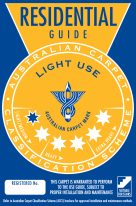
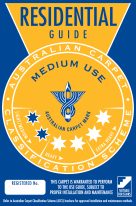
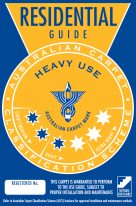
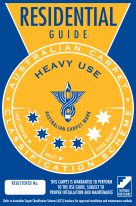
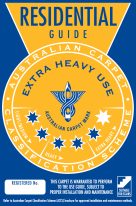
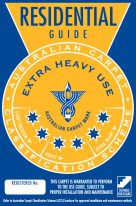
Gold and Black Labels: These indicate carpets graded for contract or commercial use, rated on a star system with a maximum of four stars. The ACCS Registration number is clearly visible on the label can allows for provenance of the quality standard.
1 Star: Light Duty
2 Stars: Medium Duty
3 Stars: Heavy Duty
4 stars: Extra Heavy Duty
ACCS plays a major role in the Contract/Commercial market and can be defined by architects and specifiers, and government procurement requirements for grading standards.
The ACCS Rug Certification Scheme provides manufacturers, suppliers, and consumers an independent and objective method of assessing the fitness for purpose and environmental impacts of rugs.
The scheme by which rugs having pile use surfaces, manufactured in, or imported for use within Australia, are ACCS certified in accordance with the ACCS Rug Certification Specifications.
The Scheme covers hand woven, hand tufted, hand knotted and machine-made rugs.
Every carpet under the ACCS is tested by NATA-accredited laboratories and assessed by the ACCS Panel of experts. The classification hinges on the carpet’s appearance retention properties, with a scoring system that emphasizes both objective metrics (90 out of 100 points) and subjective assessment (10 points). Carpets must also meet minimum standards for various construction and performance properties before receiving a grading.
Furniture with Castor Wheels: Carpets used with castor wheels (e.g., office chairs) are considered to be under extreme severe-use conditions. It is essential to use a chair pad to protect the carpet. Damage from castor wheels is not covered by any warranty.
Permanent Pile Reversal Shading Effects: This phenomenon affects the appearance of the carpet but is not covered by warranties.
Explore our selection of ACCS-graded carpets and choose with confidence, knowing you’re backed by a system committed to quality and durability.
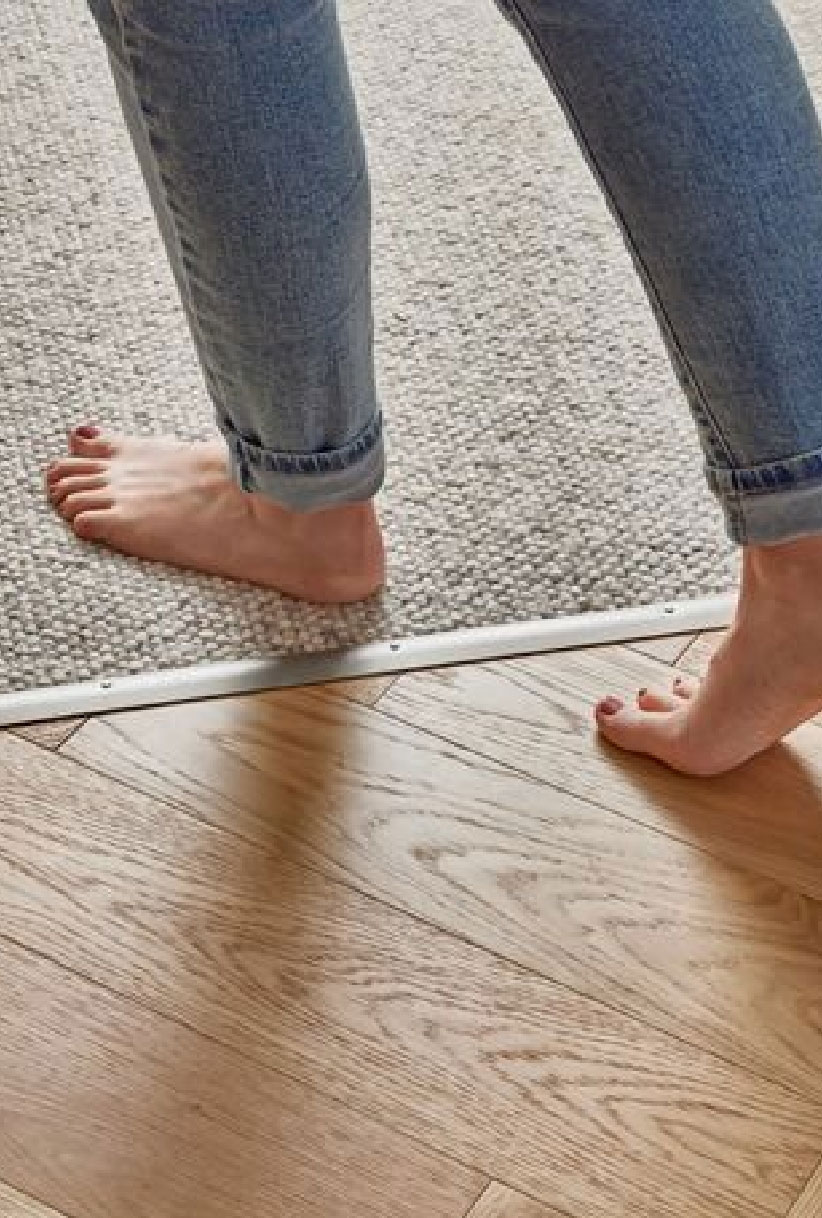
Two similar constructions of different pile height but having identical surface pile mass will perform differently. The one having the lower pile height will have a higher density and a correspondingly better performance. This relationship is assessed against a pile height standard of 10mm for Residential gradings and 5.5mm for Contract gradings.
The Guideline Surface Pile Mass figure used in the ACCS calculations is based on a wealth of performance information on carpets of various constructions and of differing fibre composition. For each fibre the Guideline Surface Pile Mass is related to gauge and differs for cut or loop pile. For any blend, the figures are taken in the same proportion as the components of the blend.
It is a measure of the g/cm3 in the surface pile and is compared with a standard of 0.150g/cm3 for loop pile carpets and 0.175g/cm3 for cut pile carpets. Any carpet achieving these figures or better achieves the maximum points allocation.
To put this in perspective, a ‘balanced’ 1/8th gauge loop pile constructed of R800 Tex yarn just achieves the maximum.
Such a carpet would be expected to perform well.
It is a measure of the g/cm3 in the surface pile and is compared with a standard of 0.150g/cm3 for loop pile carpets and 0.175g/cm3 for cut pile carpets. Any carpet achieving these figures or better achieves the maximum points allocation.
To put this in perspective, a ‘balanced’ 1/8th gauge loop pile constructed of R800 Tex yarn just achieves the maximum.
Such a carpet would be expected to perform well.
This is an experience-based rating of resistance to soiling of the various carpet fibres. The relative values have been accepted by the various fibre interests. The allocation of points to particular fibres is monitored closely and reviewed with changes in fibre technology and developments in fibre treatments.
The variety of abrasion tests produce different relativities between the various fibres. There have also been large discrepancies between laboratories using the same test apparatus and method. It is very doubtful that any abrasion test can consistently and effectively rate all fibres across the range of constructions. For these reasons an experience-based table of relative abrasion resistance has been established.
The Hexapod Tumbler Test is used by the ACCS to assess anticipated short term and long-term appearance change in the texture and colour of carpets. Currently, assessments of texture and colour change are made at 1500 cycles (simulated 9-12 months in service) and 8000 cycles (3-4 years in service equivalent). In addition, the ACCS conducts an ongoing program of carpet floor trials to assess the predictability of the Hexapod across a wide range of carpet constructions. The trials are being used to monitor in situ appearance retention with corresponding Hexapod tests.
The Density Factor is the relationship between Surface Pile Weight above the backing and Pile Thickness. It measures surface weight of yarn per cubic centimetre as this provides a much better method of comparing one carpet to another, taking into account different pile thickness. The ACCS Panel has set a density ‘benchmark’ for each grading classification level, fibre and construction type.
The OAF is a weighted system that uses the hexapod results to better predict loss of appearance during the first 12 months (early change) as well at 36-48 months (late change) of the carpet service life.
Carpet classifications are assigned by the ACCS Panel. While calculated factors and the results of performance testing remain the most important determinant of the classification awarded, all carpets are subject to review by the ACCS Panel. The Panel awards points for yarn and fibre characteristics (yarn twist, set, appearance and construction) and pile construction and character.
No carpet will be classified unless it meets all the mandatory criteria relating to the ACCS.
Godfrey Hirst Australia ACCS Panel Member
Interface ACCS Panel Member
Interface ACCS Panel Member
CIAL ACCS Secretary
Beaulieu ACCS Panel Member
Independent ACCS Panel Member
AWTA ACCS Panel Member
Independent ACCS Panel Chairman
Victoria Carpets ACCS Panel Deputy Chairman
Tarkett ACCS Panel Member
Bremworth ACCS Panel Member
Independent ACCS Panel Member
Milliken ACCS Panel Member
Godfrey Hirst Australia ACCS Panel Member